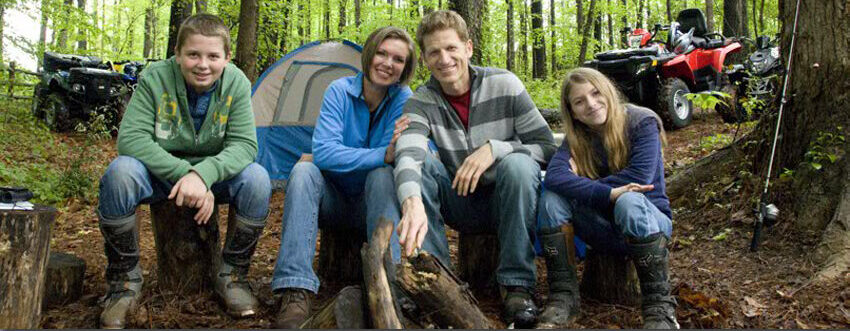IRS Determination Letter
Compliant with all requirements of Texas and Federal charity status.
Knowledge Point Network stands ready to respond. We specialize in inspiring those armed forces veterans who struggle with depression, anxiety, or other elements of disquietude. Whether your needs range from finding a greater purpose and fulfillment to beginning simple initial steps to overcome inner demons, we demonstrate how to sustain growth mentally and spiritually and extend support all along the way.
Some of our clients have said that we accomplish what money can't buy. We provide purpose, certainty, and camaraderie in our mission to serve those who served us (combat veterans and essential workers).
See the video below to see how easy and quick it can be to give to where it's needed most!
You can give online using a credit card or electronic check.
One-time donations are appreciated, but the certainty of monthly deposits magnifies our positive impact on more and more individuals.
Monetary giving is important. Volunteering is critical. Your experience and passion may prove to produce great gains that gifts and gold. Sign up and extend as much to describe your vision, character and charisma. Labor is common. Computer skills are more subjective. We can never get enough organization, planning, communicating, media expertise.

Nearly a decade ago individuals, businesses and other non-profits started lending resources. 100% of the time this was followed by fully committing to KPN. Why? Trust was the number reason. When asked each entity clearly stated the case. The reason for giving was that we integrate the item into to the mission. Fuel, Food, tools, trailers, motorcycles, vehicles, land, cookers, appliances, fishing poles, bicycles, saddles, boots, gloves, safety gear, boats, and toy hauler campers. Over $200,000 of property is pledged and currently leveraged to ensure Priority Giving continues uninterrupted. An off-road track chair was pledged last month followed by a Skid Steer.
Knowledge Point Network accepts gifts of personal property. Once you make your gift, we qualify how to integrate it. If the item does not directly support our core needs, KPN facilitates an independent entity to sell the item(s) and give the proceeds to Knowledge Point Networks’ most needed initiative.

An organization you can trust. Please grasp that we grow every dollar three-fold. How do we do that? With grants from governmental agencies! Since its inception, the discipline of KPN has revolved around grant match management. KPN holds the various agencies accountable through performance guidance.
Compliant with all requirements of Texas and Federal charity status.
Cover page contains subsequent evidence based guidance followed by KPN
Status $4500 Minimum Balance NOT Met. Please donate or ask how to activate your own fundraising initiative
Perhaps you are wondering how can “planned giving” can benefit the mission of the KPN nonprofit.
Let’s begin with a planned giving definition along with information on the three primary ways donors can contribute planned gifts. In other words, here’s all you need to know about planned giving in a nutshell.
What is Planned Giving?
Planned giving is also referred to as gift planning or legacy giving.It is a donor’s intention to contribute a major gift to an organization beyond his or her lifetime. So, unlike an annual gift (an outright gift made for current use), a planned gift is for the future. Essentially, donors make arrangements for planned gifts in the present, but the gifts are actually doled out at a later date. Additionally, the major gifts contributed by a donor can be made as a part of their financial or estate plans.
So, by definition, planned giving is not limited by donors’ current wealth. Unlike the value of single donations, or donors who contribute on a recurring basis, planned giving enables you to contribute gifts that you wouldn’t ordinarily be able to make at the current time. The gifts aren’t dependent on one’s regular income. That’s why most planned gifts contributed by donors take the form of life insurance, equity, or real estate holdings (among others). Thus, even if a donor consistently contributed small gifts, their planned gift can be of a much higher value.
Top 3 Tax Vehicles for Planned Giving
In order for an individual to leave behind a major gift, planned gifts can take many different forms. They can take the form of real estate, personal property, life insurance, or even cash. However, the majority of donors seem to gravitate towards 3 primary planned giving options:
1. Bequest
A gift (typically cash; personal property; real estate; stocks; or bonds) left behind in a will for a group, individual, or organization. There are four types of charitable bequests:
General Bequests: gifts of property taken from the assets of an estate.
Demonstrative Bequests: gifts that come from a source, such as a bank account.
Specific Bequests: gifts of personal property such as cash, jewelry, or other tangible assets.
Residuary Gifts: gifts that come from the remainder of any debts or expenses that have been paid along with other bequests that have been made.
Additionally, out of all the planned gift options a donor could choose from, bequests are the most popular. In a 2016 study conducted by Indiana University, it was reported that 42% of all planned gifts (given by donors in their subsample) were bequests.
2. Annuity
A fixed sum of money paid to an organization each year. So, this typically takes the form of a simple contract between a donor and a charity. Also known as a charitable gift annuity, a donor transfers cash, security, or assets to a cause in exchange for a partial tax deduction. They can also receive a lifetime stream of annual income from the charity itself to this charity
3. Trust
A legal entity whereby an individual holds or invests property as its titular owner. This can be for one or more beneficiaries. Additionally, there are two types of charitable trusts:
Charitable Remainder Trust: a tax-exempt trust created to reduce an individual’s taxable income by dispersing their earnings to the beneficiaries of the trust over time. The remainder of the trust goes to the organization outlined in the trust.
Charitable Lead Trust: this is the inverse of a charitable remainder trust. The trust provides financial support to multiple causes over a specified period of time. The remainder of the trust then goes to the other beneficiaries (family members, friends, etc.)
Planned giving preserves a donor’s legacy. Donors first begin thinking about planned giving when they are nearing retirement age, between the ages of 40 and 60. So, donors may give to organizations that act in accordance with their personal values and beliefs. As a result, their planned gift symbolizes the relationship they’ve cultivated with the cause they’ve given to. If anything, they want their contribution to help secure the future of the organization. It also represents their commitment to positively impacting communities in actionable ways.
Leave a legacy gift to support KPN and provide life-improving programs to the men and women who served us and our country first.
Here are a few ways to make a planned gift:
Bequests: KPN in your will or trust.
Life Insurance and Retirement Plans: You can designate KPN as a full or partial beneficiary of your policies and accounts.
Your attorney or advisor may ask for the following information:
Legal Name: Knowledge Point Network .
EIN: 85-0780542
Address: 213 Rainbow Drive #11319
Livingston, TX
77399
Phone: (936) 446-7966
Should you have any questions or need additional assistance, contact us at ceo@kpnusa.com

Your Forest, Your Freedom, Your Fun. We know you care. Each is an essential element. We appreciate you being a "friend" of the forest. Being warm to others. Picking up what others have discarded. When you are ready, consider stepping up to be a "factor".

Notifications